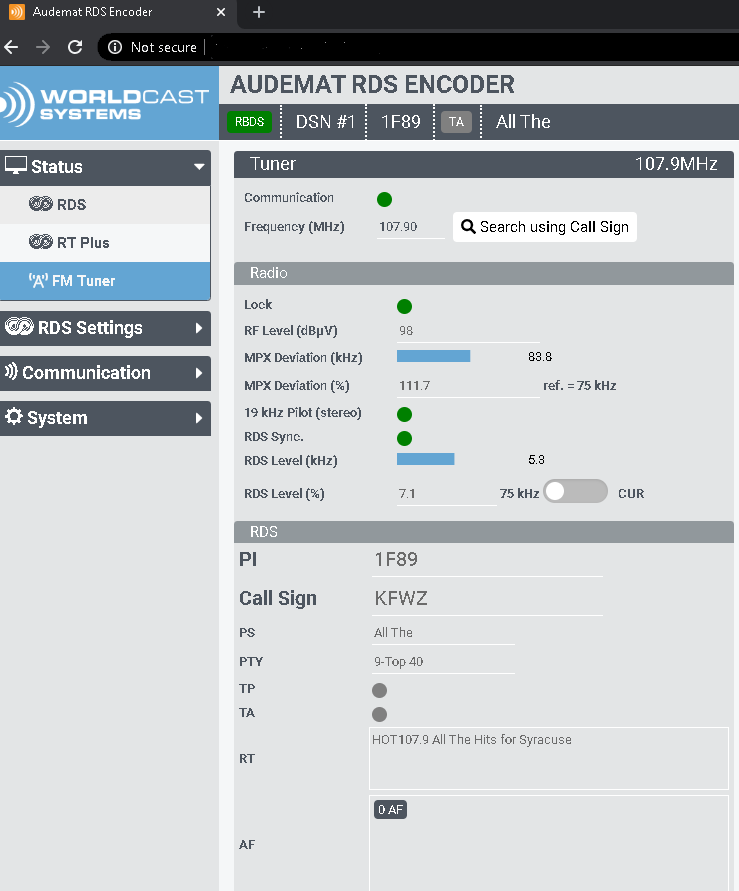by Alan Jurison
Source: Radio World, August 2020
It’s been a few years since we’ve discussed RDS best practices, but the items we have covered in this series of articles over the last decade are more relevant than ever.
At this point, just about every new automobile manufacturer supports some form of RDS when a receiver is tuned to an analog FM station.
The big shift is that visibility and support for the Program Service (PS) field and PS scrolling are fading in favor of RadioText (RT) and RadioText Plus Tagging (RT+ Tagging).
Larger 6- to 12-inch LCD displays are in almost every vehicle you see on the lots now. These have multiple lines for text messages, and the eight-character PS scrolling really does catch the eye. The full station name, title and artist with RadioText and RT+ Tagging really helps stations look better in the dash.
Also, with National Highway Traffic Safety Administration guidance and regulations related to driver distraction in the United States, many automotive manufacturers have dampened or defeated PS scrolling from working in their vehicles.
Even with RadioText, modern receivers want more information, and RT+ Tagging is supported in more vehicles. Radio World has covered a variety of topics on how to optimize RDS for these fields, and other tips and tricks. You can find that information in a 2018 ebook at radioworld.com.
Another great resource is “NRSC-G300-C: RDS Usage Guideline,” last updated April 2018). It can be found online at www.nrscstandards.org, under Standards & Guidelines.
RDS Subcarrier Injection
Let’s dig into detail about the importance of proper RDS subcarrier injection. This is still a common problem I work with, both in my professional capacity at iHeartMedia and personally as I travel and see various RDS implementations across the country.
While it’s difficult to come up with hard facts, a lot of stations are not following the NRSC-G300-C guidelines in Section 4 to ensure there is proper synchronization with the 19 kHz pilot and maintaining 6% (4.5 kHz) to 7% (5.25 kHz) injection of the 57 kHz RDS subcarrier.
First, let’s understand how the RDS subcarrier injection is described numerically.
Often in North American broadcast products, documents and discussion, you will see the RDS subcarrier injection referenced in terms of percentage, such as 6%. This is referenced as 6% out of 100% modulation referenced to 75 kHz deviation. So, 75 kHz x 0.06 (6%) = 4.5 kHz deviation. And 75 kHz x 0.07 (7%) = 5.25 kHz deviation.
You will often see these methods used (percentage and referenced as deviation) when discussing injection, sometimes interchangeably.
Suppose you have a measurement made in kHz deviation and want to translate that into percentage. For example, a modulation analyzer may say the RDS injection is 4.875 kHz but not tell you the percentage:
4.875 kHz / 75 kHz = 0.065 x 100 = 6.5%
The international markets are more focused on kHz deviation levels. You may encounter product measurements, manuals, documentation or other articles referencing kHz deviation, and now you know the basic math converting between these two. We’re really discussing the same thing, just a different reference level.


